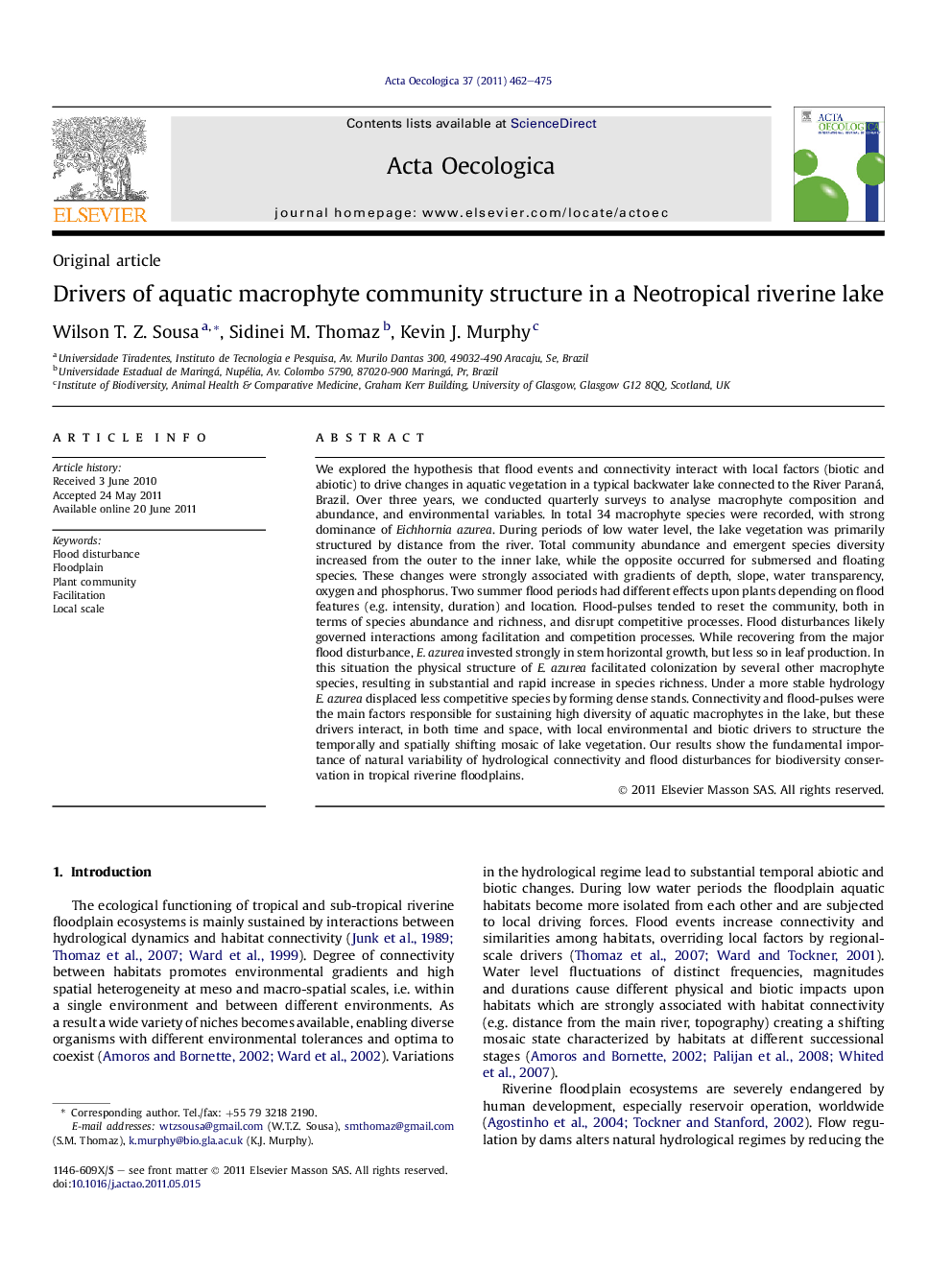| کد مقاله | کد نشریه | سال انتشار | مقاله انگلیسی | نسخه تمام متن |
|---|---|---|---|---|
| 4381370 | 1304068 | 2011 | 14 صفحه PDF | دانلود رایگان |

We explored the hypothesis that flood events and connectivity interact with local factors (biotic and abiotic) to drive changes in aquatic vegetation in a typical backwater lake connected to the River Paraná, Brazil. Over three years, we conducted quarterly surveys to analyse macrophyte composition and abundance, and environmental variables. In total 34 macrophyte species were recorded, with strong dominance of Eichhornia azurea. During periods of low water level, the lake vegetation was primarily structured by distance from the river. Total community abundance and emergent species diversity increased from the outer to the inner lake, while the opposite occurred for submersed and floating species. These changes were strongly associated with gradients of depth, slope, water transparency, oxygen and phosphorus. Two summer flood periods had different effects upon plants depending on flood features (e.g. intensity, duration) and location. Flood-pulses tended to reset the community, both in terms of species abundance and richness, and disrupt competitive processes. Flood disturbances likely governed interactions among facilitation and competition processes. While recovering from the major flood disturbance, E. azurea invested strongly in stem horizontal growth, but less so in leaf production. In this situation the physical structure of E. azurea facilitated colonization by several other macrophyte species, resulting in substantial and rapid increase in species richness. Under a more stable hydrology E. azurea displaced less competitive species by forming dense stands. Connectivity and flood-pulses were the main factors responsible for sustaining high diversity of aquatic macrophytes in the lake, but these drivers interact, in both time and space, with local environmental and biotic drivers to structure the temporally and spatially shifting mosaic of lake vegetation. Our results show the fundamental importance of natural variability of hydrological connectivity and flood disturbances for biodiversity conservation in tropical riverine floodplains.
► Floods, connectivity and local drivers interact to sustain high diversity of plants.
► Floods reset the aquatic macrophyte community.
► Under intermediate abundance Eichhornia azurea tends to promote facilitation.
► Hydrology governs interactions among facilitation and competition processes.
Journal: Acta Oecologica - Volume 37, Issue 5, September–October 2011, Pages 462–475